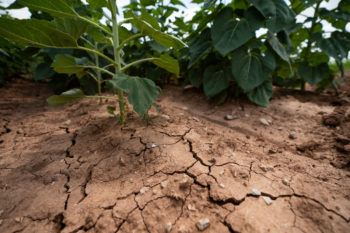Intense Drought Conditions Could Make This Summer One Of The Hottest In Texas History

With the state experiencing its most severe early summer drought conditions in nearly a decade, Texans are facing a wave of especially hot and dry weather that may kick off one of the state’s hottest summers on record, says Texas A&M University climate expert John Nielsen-Gammon.
A regents professor in the Department of Atmospheric Sciences who serves as the Texas state climatologist, Nielsen-Gammon said the state has already been experiencing higher-than-average temperatures this year, with last month tying for the second-hottest May in Texas history.
“June is typically a wet month for Texas, but it’s not shaping up that way so far,” said Nielsen-Gammon, who is also the director of the Southern Regional Climate Center. “Except for West Texas, July is typically a dry month, so continued lack of rain in June could mean that we are stuck with a very hot summer. The hottest summer on record was in 2011, the one recent year in which June drought was worse than today. It would not surprise me if this summer ended up being the second-hottest summer on record for the state.”
Currently, the National Weather Service is projecting triple-digit temperatures across the majority of the state starting Friday through at least Monday.
“The heat will be accompanied by little to no precipitation, guaranteeing that the first half of June will also see below-normal precipitation across the state,” Nielsen-Gammon said.
According to U.S. Drought Monitor data, early-June drought conditions haven’t been this bad in Texas since 2013. In particular, the Southern High Plains, Trans Pecos, Hill Country and San Antonio areas are experiencing exceptional drought conditions. Extreme drought covers over 40% of the state. And while some other parts of the state have managed to escape these harsh conditions so far, Nielsen-Gammon said that’s starting to change.
“Drought-free areas include parts of North-Central and Northeast Texas within 50 miles or so of the Red River, much of east Southeast Texas, and far South Texas,” he said. “Of those areas, East and Southeast Texas have mostly missed out on recent rains and are rapidly drying out.”

One thing to be aware of as summer looms, Nielsen-Gammon said, is these trends can create a sort of feedback loop: Hot weather allows the ground to dry out more quickly, which in turn leads to even higher temperatures down the line.
“It takes energy from the sun to evaporate water from the ground and from plants,” Nielsen-Gammon said. “If there’s no water left, all of the absorbed energy goes into heating the ground and driving up temperatures during the day. So the dry conditions right now are a harbinger of heat for much of the summer.”
While it’s possible that tropical storm activity may bring much-needed rains to the state, and NOAA is predicting an especially active hurricane season this year, Nielsen-Gammon said the concentration of rains within a tropical cyclone, if one strikes Texas, would leave some parts of the state with far too much rain while others remain parched. Overall, the Climate Prediction Center’s current odds favor above-normal temperatures throughout the Texas summer.
While drought conditions have primarily been a problem for agriculture so far, Nielsen-Gammon said that the longer they persist, the more likely Texas is to face general water supply issues. Restrictions have already been put in place in many parts of Central Texas, and Nielsen-Gammon said similar precautionary measures will be increasingly important as temperatures continue to rise across the state.
“Saving water now will mean more water later in the summer,” he said, “and even next year if the drought lasts that long.”
Media contact: John Nielsen-Gammon, n-g@tamu.edu





